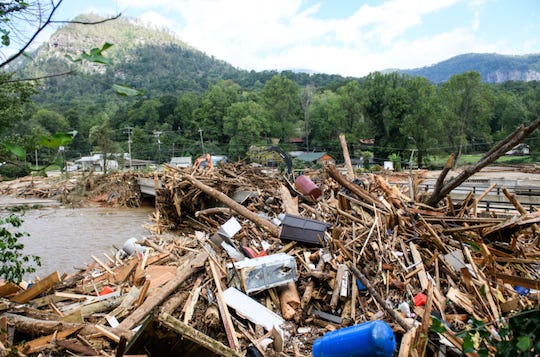As of Sunday, October 6th, the death toll from Hurricane Helene is 227 across six states and expected to rise as recovery efforts continue. Survivors and emergency workers are coping with flood waters washing away bridges and vital infrastructure like cell towers impacting their ability to assist.
I texted a friend outside Greensboro, NC last week. He felt grateful his community was not affected as badly as the cities nearby. He had cell service and power. Stories of those less affected helping the severely impacted were highlighted throughout all six states. Neighbors helping neighbors.
My cousin in Conyers, GA experienced the aftermath of Helene’s unprecedented rainfall compounded by a pool chemical plant fire. It was four miles from her home. It continues to spew less intense plumes of smoke today. Her son was able to take her shopping so she could shelter in place. Family helping family.
We haven’t experienced catastrophic devastation since 1,392 people died in Hurricane Katrina (August 2005). The primary recovery period after Katrina was about 18 months with remodeling leveling off in 2007. However, New Orleans celebrated the rebuilding of all public school buildings damaged or destroyed by the hurricane in March 2023. Rebuilding doesn’t happen overnight.
We have always been a society that steps up to help others across the street, across the country, and around the world. I was volunteering with the Fishers YMCA when I first heard the phrase “planting seeds for trees we’ll never sit under.” We were investing in kids we didn’t know personally; we would never know the impact our efforts and contributions would have on their future. We planted seeds for trees we’ll never sit under.
Today, a tropical storm strengthened into Hurricane Milton barreling across warm waters off Florida with landfall expected midweek. For Florida and perhaps some of the areas already facing rebuilding, there may be more heartache to come. Hurricane season, which usually peaks in August/September, isn’t over annually until November 30 when the Atlantic and Gulf of Mexico waters have cooled.
According to the report, “A Look at Generational Donor Trends and Influences” people born between 1946 and 1964 gave financially to charitable causes more than most generations. The most charitable were people born before 1946. Their generosity accounted for 26% of the total giving in the U.S. even though they comprise about 11% of the population. The population born between 1965 and 1980 led all age groups in volunteer hours served.
Giving comes in all stages of life. Mason Hargrove (21 years old) and Dane Jackson (31 years old), professional kayakers, used their skills to go into areas larger boats could not navigate. There were downed trees in the water. The kayakers found about 40 people sheltering in a cove. They provided supplies and alerted professional search and rescue teams. The people they found were rescued by helicopters. Strangers helping strangers.
GIVER BEWARE: Scams, unfortunately, follow natural disasters. Protect yourself from scammers to ensure your money goes where you intended. Here are 5 tips.
Donate to trusted charities with a history in disaster relief.
Conduct your research. Visit www.give.org or www.charitywatch.org
Use secure payment methods to better protect yourself from financial concerns
Verify text donations! Confirm the charity’s number on the website to ensure it is valid.
Be cautious on crowdfunding sites for natural disasters. Even if it is a person you know; contact them to ensure their identity or image has not been stolen.
Older, Bolder & Better! is a reader-supported publication. To receive new posts and support my work, consider becoming a free or paid subscriber. Thank You!







Yes we are
Great advice